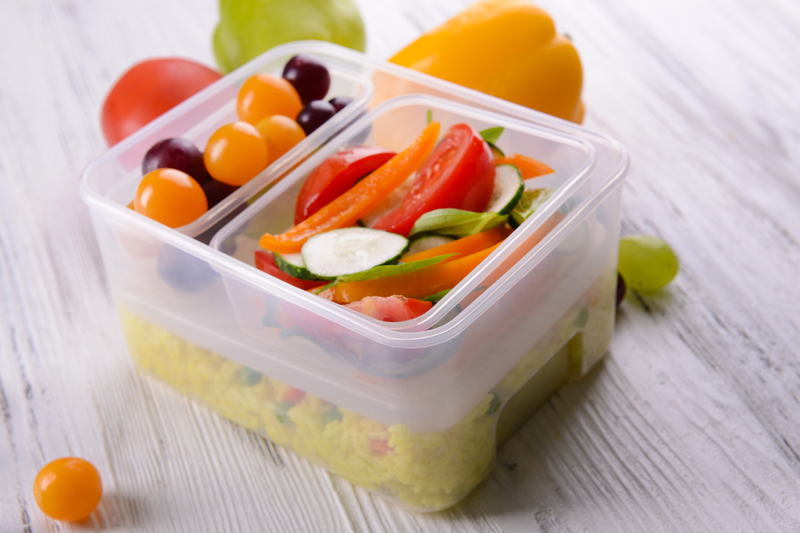Step-by-Step Guide on Minimizing Waste in Your Home
Learning how to minimize waste at home is an essential step toward living more sustainably and saving money. From reducing food scraps to eliminating plastic packaging, small changes can add up to make a big difference. In this comprehensive guide, we'll walk you through practical, easy-to-implement steps to reduce and manage household waste efficiently.
Why Focus on Household Waste Reduction?
Before diving into the steps, let's explore why minimizing household waste matters:
- Conserves resources: Fewer materials end up in landfills, preserving natural resources.
- Reduces pollution: Less waste equals less pollution from landfills and incinerators.
- Saves money: Using less and reusing more means spending less.
- Encourages mindful living: Reducing waste helps you make conscious, environmentally-friendly choices.
Minimizing waste in your household isn't just good for the planet--it's beneficial for your wallet and well-being as well.

Step 1: Audit Your Household Waste
Track Your Trash
The first step to minimize waste at home is understanding what you throw away. Spend one week collecting and analyzing your garbage. Sort your waste into the following categories:
- Food scraps and leftovers
- Packaging (plastic, cardboard, glass, etc.)
- Paper products
- Personal care and cleaning product containers
- Miscellaneous items
Tip: Take pictures or notes each day to spot recurring patterns. This helps you identify the main sources of waste in your home.
Analyze Your Findings
At the end of the week, review your data. Are you throwing out a lot of food? Is packaging waste piling up? Recognizing these patterns is crucial for choosing effective waste reduction strategies.
Step 2: Rethink and Refuse
Eliminate Single-Use Items
One of the simplest ways to reduce waste at home is refusing items you don't need, especially single-use products like:
- Plastic straws, cutlery, and plates
- Disposable coffee cups and lids
- Single-use bags and bottles
- Individually wrapped snacks
Switch to reusable alternatives, such as stainless steel straws, cloth napkins, and refillable water bottles. Refusing unnecessary items at the source prevents them from entering your waste stream.
Opt for Low-Waste Groceries
During your next shopping trip, bring your own bags and containers. Choose products with minimal or compostable packaging. Support stores that offer bulk food sections so you can pick up what you need without extra waste.
Be Mindful About Freebies and Marketing Materials
Say no to unsolicited mail, samples, or flyers. Opt out of paper bills and marketing materials by switching to digital where possible.
Step 3: Reduce What You Use
Buy Less, Choose Wisely
Being selective about your purchases is central to reducing home waste. Ask yourself:
- Do I really need this item?
- Is there a reusable or longer-lasting version?
- Can I borrow or rent instead?
Focusing on quality over quantity helps minimize future waste and saves money.
Practice Portion Control
Prepare only as much food as you can eat, and store leftovers in reusable containers. Reducing food waste in your kitchen is one of the most effective ways to lower your household garbage output.
Step 4: Reuse and Repurpose
Find Second Lives for Everyday Items
Before tossing something away, think of ways it could be reused in your home. Some creative ideas include:
- Glass jars for food storage or organizing small items
- Old t-shirts as cleaning rags
- Shoe boxes for organizing drawers
- Grocery bags as trash liners
Repurposing items not only saves resources but sparks creativity and can be a fun household activity.
Get Involved in Community Swaps or Buy Nothing Groups
Donate, exchange, or borrow items within your local community to prevent waste. Many neighborhoods have "Buy Nothing" groups or swap events, making it easy to share resources and minimize waste together.
Step 5: Recycle Responsibly
Know What Can Be Recycled
Recycling correctly plays a vital role in minimizing household waste. However, not everything goes in the recycling bin:
- Clean, dry paper and cardboard
- Aluminum cans and foil
- Numbered plastics (check local rules)
- Glass bottles and jars
Check your local government or waste management website for precise recycling guidelines, as they often differ from one city to another.
Don't Wishcycle!
Placing non-recyclable items in the recycling bin contaminates the system. When in doubt, throw it out or better yet, find ways to reuse or repurpose the item instead.
Drop-off and Special Recycling Services
Some items, like batteries, electronics, and textiles, require special disposal. Track down local drop-off points or recycling drives to responsibly dispose of these materials.
Step 6: Compost Your Food Waste
Why Compost?
Composting is the ultimate in household waste reduction, turning food scraps and organic materials into nutrient-rich soil. This not only diverts waste from landfills but also benefits your garden.
Common compostable items include:
- Fruit and vegetable peels
- Coffee grounds and tea bags
- Eggshells
- Yard trimmings and dead leaves
Getting Started with Composting
Composting can be as simple as a backyard bin or as sophisticated as a worm composting setup. Urban dwellers can look for community compost facilities or countertop composters for indoor use.
Always exclude dairy, meat, and oily foods from your compost, as they attract pests and slow decomposition.
Step 7: Switch to Sustainable Products
Eco-Friendly Alternatives
Making simple swaps in household items can substantially reduce your home's waste footprint:
- Bamboo toothbrushes instead of plastic ones
- Bar soap or refillable liquid soap over single-use plastic dispensers
- Beeswax wraps or silicone lids instead of cling wrap
- Reusable cotton rounds in place of single-use pads
Choose Concentrated and Package-Free Products
Look for cleaning and personal care products that come in concentrated forms or are package-free. Shampoo bars, solid dish soap, and refill stations for laundry detergent are great examples.
Step 8: Maintain and Repair Before Replacing
Value What You Own
Extending the life of your belongings prevents unnecessary waste. Take the time to repair, mend, or tune up items before deciding to replace them. This applies to clothes, electronics, small appliances, and even furniture.
Learning New Skills
Consider learning basic sewing, appliance repair, or even bike maintenance. Many online tutorials and local workshops can empower you with the skills to lengthen the lifespan of your belongings.
Step 9: Educate the Household and Stay Accountable
Get Everyone Involved
Engage all family members in your household waste minimization journey. Create clear signage at recycling and compost stations, and explain the benefits of these practices to kids and guests.
Set Goals and Track Progress
Establish measurable goals, like reducing trash output to one bag per week. Celebrate milestones and discuss ways to refine your waste-reduction system together.
Step 10: Advocate and Inspire Beyond Your Home
Share Your Success
Share your experiences with minimizing waste at home with friends, neighbors, and through social media. Offer useful tips, host workshops, or start conversations about zero waste practices in your community.
Support Waste Reduction Initiatives
Advocate for better recycling programs, composting facilities, or plastic bans in your area. Your voice can contribute to larger changes that help everyone live more sustainably.
Common Challenges and How to Overcome Them
Convenience vs. Consciousness
Convenience often leads to waste. Combat this by planning ahead--keep shopping bags, utensils, and refillable bottles handy when on the go.
Initial Costs
Some sustainable alternatives may cost more upfront but save money in the long run. Focus on changes with the highest impact, like food waste reduction, before investing in new products.
Family Buy-In
Encourage gradual change instead of demanding perfection. Celebrate successes and keep the conversation positive and collaborative.

Resources for Minimizing Waste at Home
- Local government websites: Find recycling and composting guidelines.
- Zero waste blogs and books: Discover tips and inspiration.
- Community organizations: Join workshops or find local swap events.
- Mobile apps: Use waste tracking or donation apps to manage what leaves your home.
Conclusion: Start Small, Make a Big Impact
Minimizing household waste is a journey, not a destination. Every small step counts, whether that's saying no to a plastic bag, learning to compost, or simply buying less. With conscious choices and simple changes, you can create a sustainable, low-waste home. Remember, the goal is progress, not perfection.
Ready to begin? Choose one step from this guide to implement today, involve your family, and watch your waste--and environmental impact--shrink. Your home and the planet will thank you!